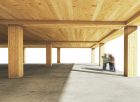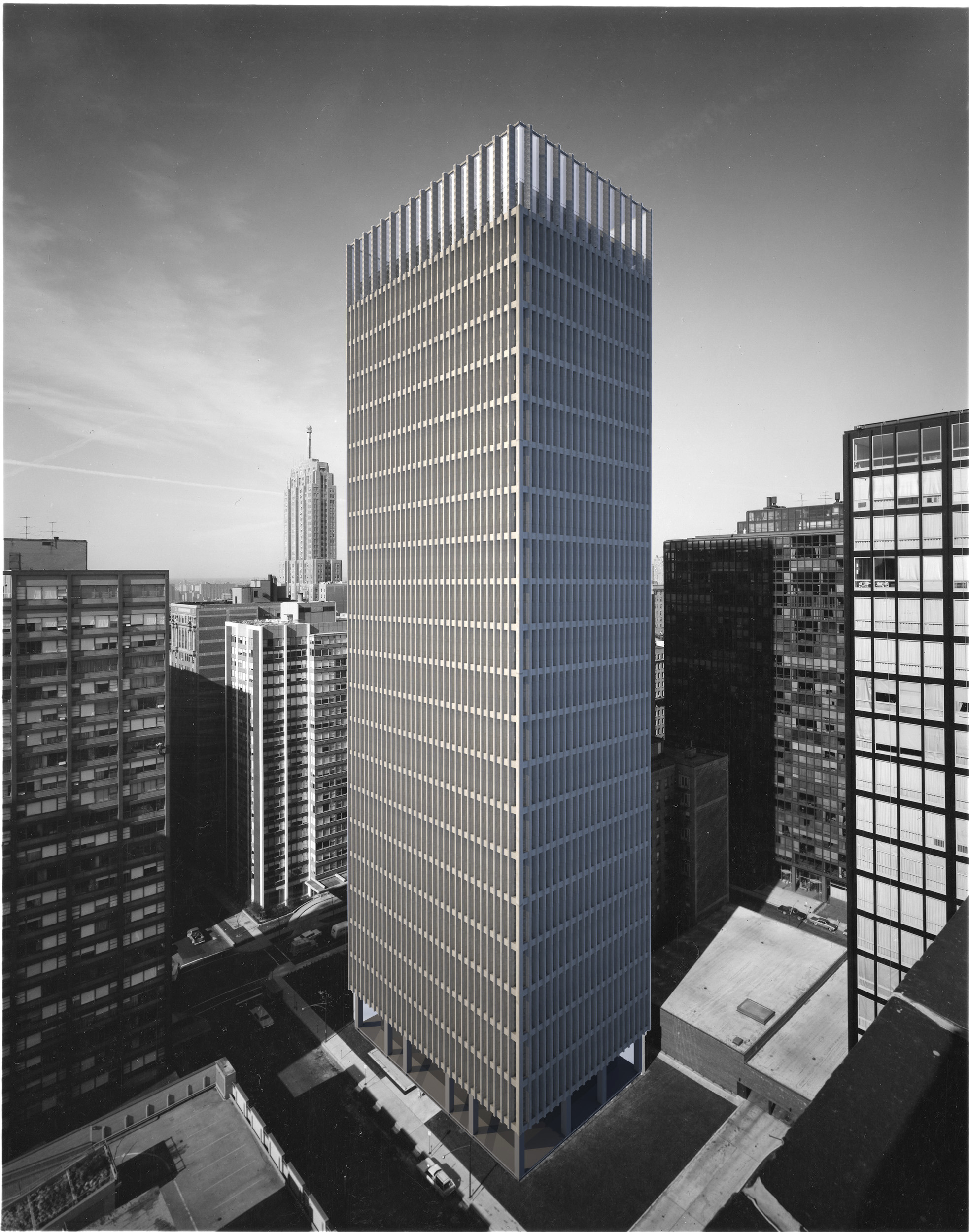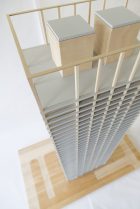"Campus of the Digital Age": Cornell Tech Officially Debuts on Roosevelt Island in New York
Moon Village
01/



Since 2013, SOM has developed methods to reduce the carbon impact of buildings by using timber as an alternative to concrete. Our concept for a timber-concrete composite system is perfectly suited to the 2021 International Building Code, which opens the way for taller timber buildings.
Advancing sustainable construction methods is an urgent concern as cities look to reduce carbon emissions. Since 2013, SOM has explored the potential of mass timber to reduce the embodied carbon footprint of high-rise buildings. The Timber Tower Research Project, funded by the Softwood Lumber Board, examined solutions that could utilize mass timber as the main structural material to reduce the embodied carbon footprint of buildings by 60 to 75 percent compared to a benchmark concrete building. The research team proposed a structural system called the Concrete Jointed Timber Frame, a system which employs mass timber for main structural elements and reinforced concrete for connections. This approach was further developed in a second report in 2014 that focused on gravity framing systems and recommended a physical testing program.

To advance this research, SOM and Oregon State University, with support from the Softwood Lumber Board, developed a comprehensive physical testing program that, to date, has included nearly 20 tests of varying sizes and configurations. The successful test of the final full-scale specimen provided strong evidence that the timber-concrete composite system can satisfy code requirements and compete with traditional construction methods.
The tested floor specimen—36 feet long by 8 feet wide—was modeled on a portion of a typical structural bay. The tested element was a Cross-Laminated Timber (CLT) deck topped with a thin layer of reinforced concrete to enhance the structural, acoustic, and fire performance of the system. The two materials were joined and made composite with connectors specifically designed for this application. The reinforced concrete topping slab was thickened at the supporting CLT beam to form a rigid connection between CLT decks, a feature which allows floors to span between beams with a relatively thin cross-section. For the test, the specimen was loaded with a hydraulic actuator and was recorded by 48 different sensors over the course of two hours.


The floor system provided greater stiffness than required by code and supported an ultimate load of 82,000 pounds—approximately eight times the required design load. The initial results are promising and will serve as the basis for verification testing—a series of tests that will address issues such as fire resistance—which will be required before the system can be used in high-rise buildings. SOM found that these timber-concrete composite floor systems had further applications when combined with steel framing systems and as leave-in-place formwork in concrete buildings.
Since SOM began its research, the capacity for mass-timber construction in North America has increased considerably. Progress has also been made in building regulations: the height and area expansions for mass timber in the 2021 International Building Code (IBC) have paved the way for timber towers to become a reality. IBC 2021 now allows high-rise buildings over 85 feet to be constructed in mass timber, provided a nominal concrete topping slab is placed over the mass timber floor for improved fire resistance. SOM’s concept for timber-concrete composite systems works perfectly with the new requirements of IBC 2021. SOM continues to develop these concepts to advance low-carbon solutions for cities around the world.

01/